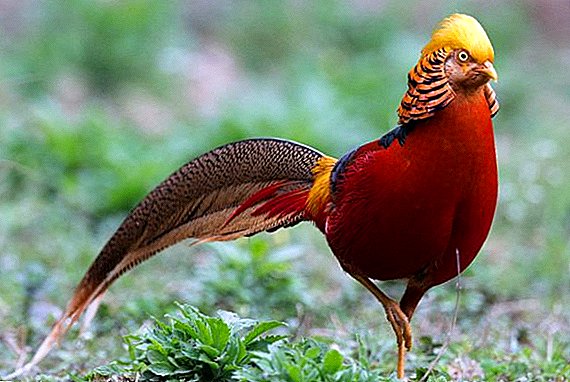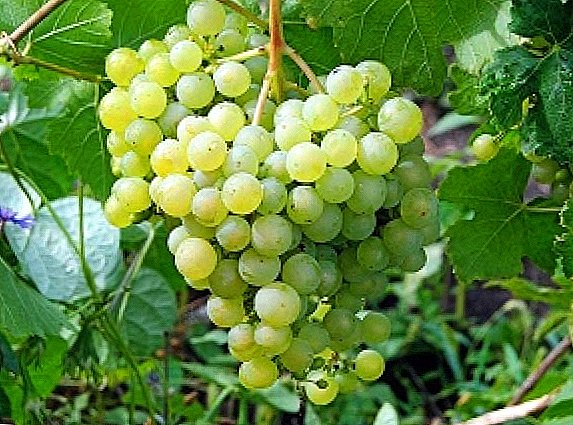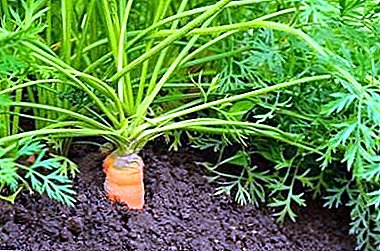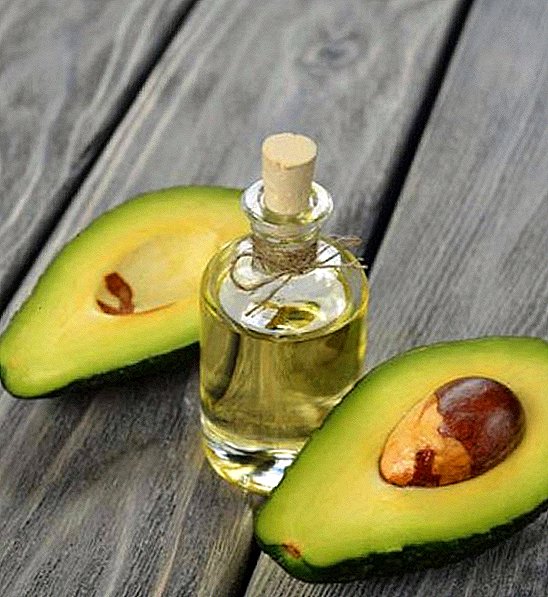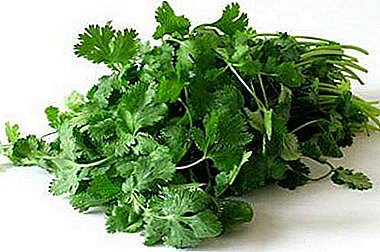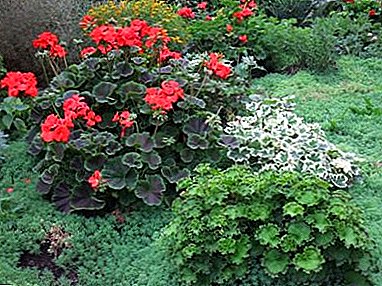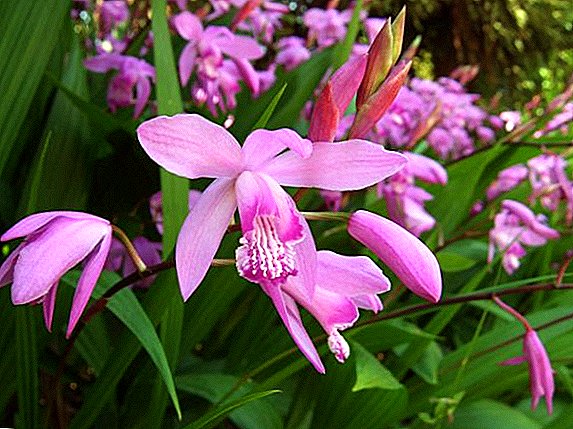 Perhaps every gardener dreams of such a flower that would be incredibly beautiful and at the same time unpretentious to the climatic conditions, and not picky about meticulous care. Fortunately, there is such a plant, and you can buy it, probably, in every flower shop, - this Orchid Bletilla. In nature, this flower grows in the Far East, in China and Japan. In the climatic conditions of our country, the Orchid Bletilla grows easily at home, in winter gardens and in the open field.
Perhaps every gardener dreams of such a flower that would be incredibly beautiful and at the same time unpretentious to the climatic conditions, and not picky about meticulous care. Fortunately, there is such a plant, and you can buy it, probably, in every flower shop, - this Orchid Bletilla. In nature, this flower grows in the Far East, in China and Japan. In the climatic conditions of our country, the Orchid Bletilla grows easily at home, in winter gardens and in the open field.
Bletilla Orchid: Flower Features
Homeland Bletilla is East Asia.This is a perennial land plant, reaching a height of no more than a few tens of centimeters. The leaves are green, mostly lanceolate, and sometimes mottled. The orchid of this genus has few-flowered brush. Peduncle occurs either at the end of spring or in summer, it all depends on the climate. The shape of flowers is classic, familiar to orchids. Often they have a purple or pink-purple hue, but there are also white ones. Usually the types of bletills exude a soft and pleasant aroma. The name of this genus comes from a similar name Bletia.
Did you know? Some types of orchids live up to a hundred years.
Types of Bletilla
The genus Bletilla includes about 10 species. Bleachilla hyacinth (Bletilla hyacinthina) and occlusive or brown yellow (Bletilla ochracea) are usually grown at home.
Bletilla hyacinth, or striped (B. hyacinthina, B. striata) - the most popular type of blats, coming from China and Japan. It reaches a height of from 30 to 70 cm, on the roots there are annual growths in the form of tuberous thickenings. The above-ground part of the plant is represented by long flower stalks, large smooth leaves with pronounced longitudinal folds, and also long pseudo-leaves, which, tightly pressed against each other, form a false stem 15 cm long. Inflorescence is a rare spike of eight flowers. The flowers are quite large, up to 5 cm, bright pink-purple color with a delicate aroma. Also known is a variety of Bletilla striped with white flowers - "Alba".
Inflorescence is a rare spike of eight flowers. The flowers are quite large, up to 5 cm, bright pink-purple color with a delicate aroma. Also known is a variety of Bletilla striped with white flowers - "Alba".
Bletilla brown-yellow (ocher) found in Vietnam, Japan, China, Taiwan and Myanmar. These orchids are small in size with soft green broadly lanceolate longitudinally folded leaves. The inflorescence is represented by a few-flowered brush with peduncles up to 40 cm long. The flowers are small, slightly smelling, of the classical form of orchids.
Did you know? The orchids of the Paphiopedilum sanderianum species have the largest flowers, the length of which is almost a meter long in the wild! This record set an orchid of this species, which was raised in 1991 in the city of Somerset. The length of the petals of its flowers was 122 cm, and the height of the plant itself was 20 m.
Where, when and how to plant a bletillu
Orchid Bletilla can thrive in the garden in the open field in areas with warm and temperate climates, where the temperature does not fall below -5 ° C. In cold climates, it is better for Bletilla to grow at home as an indoor flower.
What kind of lighting do you want
Growing in the garden, the Billyilla orchid needs a well-lit area, which is at the same time protected from direct sunlight.
Air humidity and temperature
 Bletilla does not tolerate dampness and cold wind, so try to provide her the right care. This flower grows well in a temperate continental climate with a snowy, but not very frosty winter and warm, moderately humid summer. Only here with flowering there she may have problems.
Bletilla does not tolerate dampness and cold wind, so try to provide her the right care. This flower grows well in a temperate continental climate with a snowy, but not very frosty winter and warm, moderately humid summer. Only here with flowering there she may have problems.
For Bletilla, you need to carefully select a place that should not be damp and flooded with melt water. Also, the orchid must be protected from frost below -5 ° C, digging up for the winter pseudobulb and cleaning in a dry place. In warm climates, the flower can simply be covered with a special material or dry leaves.
Soil for planting
Bletilla can grow in almost any soil, so it feels great in ordinary garden soil.
Important! To grow your plant faster and more intensely bloom, you should use a special soil mixture, which is intended for orchids.For planting blats in open ground mix sand, leaf humus and lime in equal proportions. It is also possible to prepare a soil mixture that is as close as possible to the soil in which the orchid grows in the wild: two parts of top neutral peat, one part of expanded clay, one part of chopped bark, one part of moss, and also one part of wood ash and woody coal The result will be a mixture with pronounced granules, which well passes moisture.
Proper planting Orchid Bletilla
 Growing blats can occur from pseudobulb or seed. The best time to plant an orchid is spring. Pseudobulbs should have a uniform color, be strong and devoid of signs of rotting. They should be planted in prepared soil to a depth of 5 cm and at a distance of 15 cm from each other. The soil must be periodically moistened, and a full-fledged watering should be carried out only after the first leaves appear.
Growing blats can occur from pseudobulb or seed. The best time to plant an orchid is spring. Pseudobulbs should have a uniform color, be strong and devoid of signs of rotting. They should be planted in prepared soil to a depth of 5 cm and at a distance of 15 cm from each other. The soil must be periodically moistened, and a full-fledged watering should be carried out only after the first leaves appear.
For planting seeds you need a plastic container with a moistened substrate. Spread the seeds in a thin layer and rarely enough. Provide future seedlings with good illumination. If natural is not enough, it is allowed to add artificial. The optimum air temperature should be between 22-27 ° C.
Important! It is not allowed to overmoisten or dry the soil mixture.After two months, start feeding with a special fertilizer intended for orchids. Before the onset of winter, chaff the soil with leaves or arrange a dry-tunnel cover with agrospan or spunbond.
How to care for the plant
Strangely enough, it is much easier to care for bletilla than for other orchids, which are considered to be very capricious and capricious in cultivation. However, Bletilla also has its preferences regarding various aspects of care - irrigation regime, fertilizer, protection from diseases and pests, as well as preparation for wintering.
The rules of watering Orchid Bletilla
 In the summer, Bletilla needs abundant watering, which should be gradually reduced by winter. Here the main thing - prevent rotting of the root system. By the onset of the rest period, watering should be significantly reduced, and the indoor plant should be moved to a dark and cool place. At this time, Bletilla loses leaves. At the end of the rest period, the flower needs to increase the volume of watering, and move it to a bright place.
In the summer, Bletilla needs abundant watering, which should be gradually reduced by winter. Here the main thing - prevent rotting of the root system. By the onset of the rest period, watering should be significantly reduced, and the indoor plant should be moved to a dark and cool place. At this time, Bletilla loses leaves. At the end of the rest period, the flower needs to increase the volume of watering, and move it to a bright place.
During the flowering period when watering water should not fall on the flowers, because they can start from this rot. Water a watering bottle with Billa, so water will flow only to the root system. The frequency of watering you have to adjust, based on the degree of moisture consumption.
Important! Experts advise to count the conduct of irrigation in such a way that the roots dry out only once a week.
Does the plant need feeding?
Fertilize Bletilla need in the period of its intensive growth. Twice a month it is necessary to apply a 0.01% solution of mineral fertilizer. During the rest period, feeding is stopped.
Soil care
Since the root system of the flower is located close to the surface, it is impossible to loosen the soil in that place. Remember that even weeds should be pulled out very carefully so that the growth buds on the delicate orchid roots are not damaged. It is even better to cut the weeds under the root, without pulling them out. It may take more time and effort, but it's worth it.
Orchid Transplant Rules
 The plant usually tolerates transplantation. Carefully dig up the bletillu with a lump of earth, without hitting the delicate roots, or remove the soil from the pot. If in the second case it is difficult for you to do this, then you can cut the pot, but without damaging the plant. Immerse the orchid together with the earthy clod in a container with warm water so that the soil is completely soaked. Gently wash the remnants of the soil from the roots and remove any dead and damaged parts of the system. Sprinkle the ground with powdered charcoal. Put the Bletilla on a paper or waffle towel until dry. Place a claydite drainage layer in the hole or pot - 5 cm. Put new prepared substrate on top and place the plant in it.
The plant usually tolerates transplantation. Carefully dig up the bletillu with a lump of earth, without hitting the delicate roots, or remove the soil from the pot. If in the second case it is difficult for you to do this, then you can cut the pot, but without damaging the plant. Immerse the orchid together with the earthy clod in a container with warm water so that the soil is completely soaked. Gently wash the remnants of the soil from the roots and remove any dead and damaged parts of the system. Sprinkle the ground with powdered charcoal. Put the Bletilla on a paper or waffle towel until dry. Place a claydite drainage layer in the hole or pot - 5 cm. Put new prepared substrate on top and place the plant in it.
You can put a small peg for garters hanging down the stems, if any. Sprinkle on top of another substrate and press down with your hand, or caulk him to donkey if the orchid changes in the garden. If the bletilla grows in room conditions, the pot should be lowered into the water for a couple of minutes and then allowed to drain. So you check the amount of substrate. If the roots are bare on the surface, it means that you need to fill up more.
Reproduction of bletila seeds and root division
The breeding of a garden orchid of a bletilla can occur in two ways: seed and rhizome division. To grow a flower from seed is very difficult and long. In addition, it requires sterile laboratory conditions. The first flowers, at best, will appear only after 6-7 years. Therefore, the second method - the division of the roots is the most appropriate. You can only share strong and lush patterns that have lived for many years.
 The best time for breeding Bletillah is when it shoots. Cut the stem with a pruning shears, leaving the top with two aerial roots and one stump with four leaves. Soon 1-2 new growths will appear on the stump. After 3 years, they will become independent adult blooming orchids. The tip takes root and grows more slowly, but over time it becomes an independent flower. Sprinkle the place with antiseptic or crushed wood charcoal.
The best time for breeding Bletillah is when it shoots. Cut the stem with a pruning shears, leaving the top with two aerial roots and one stump with four leaves. Soon 1-2 new growths will appear on the stump. After 3 years, they will become independent adult blooming orchids. The tip takes root and grows more slowly, but over time it becomes an independent flower. Sprinkle the place with antiseptic or crushed wood charcoal.
Did you know? The smallest flower in the orchid species Platystele jungermannoides and does not exceed 1 mm in diameter.
Diseases and pests of Billyilla
The main enemy of Bletilla is black rot. It is expressed by a noticeable damage to the tissues and their darkening. The reason for this is a gross error in the care - low temperature with high humidity. The diseased plant must be destroyed, and the neighboring orchids must be treated with fungicides containing copper, for example, Bordeaux mixture.
Slugs and snails hit the young roots of flowers. Especially favorite delicacy of them are apexes - cones of root growth. You can fight them mechanically, manually. There are many plant protection products for slugs that can be found in every flower shop. You can fight them carefully by examining the surface of the flowerpot in the evening and removing pests.
 On the market there is a fairly large number of plant protection products. The main thing - to act according to the instructions in the recommended ratios and concentrations. More young leaves and buds can damage green aphid In this case, malathion-based drugs will do well.
On the market there is a fairly large number of plant protection products. The main thing - to act according to the instructions in the recommended ratios and concentrations. More young leaves and buds can damage green aphid In this case, malathion-based drugs will do well.
Did you know? The most expensive orchid is Gold Kinabalu. This type of orchid is unusually rare and blooms only when the plant reaches 15 years of age. One escape can cost $ 5000.
How to protect Bletilla in the winter
The main condition for the successful wintering of Billyilla - protection from frost and damp. Therefore, in cold regions, it is not left to winter in the ground, and pseudobulbs are dug out and stored in a cool, dry place. In regions with a warmer climate, Bletilla can be left for the winter in the garden, necessarily covering it with a thick layer of needles, dried leaves, or covering material.
Not whimsical in comparison with other orchids, it still requires a lot of your attention and care. But such a beautiful exotic flower, without a doubt, deserves it.


